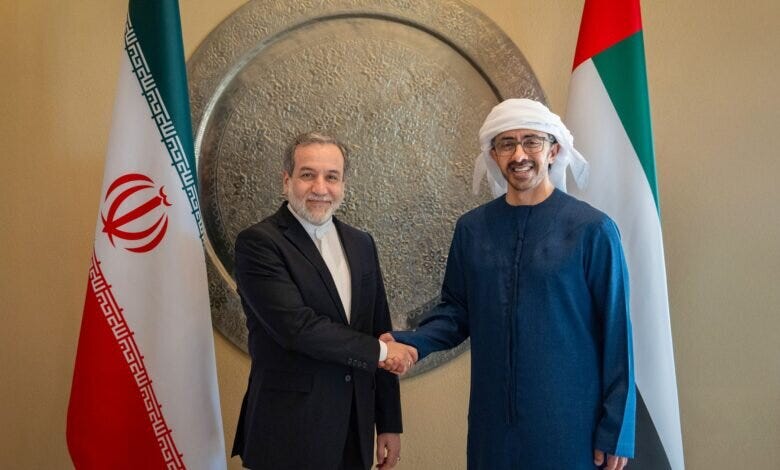The Russo-Iranian Economic Counter to IMEC
Iran and the UAE seek to navigate the changing dynamics in the region and potentially find common ground against re-emerging political Islam despite their rivalries.
Deputy Prime Minister of Russia, Vitaly Savelyev, visited Tehran on 23 December to discuss the completion of the Rasht-Astara section of the Astara–Rasht–Qazvin railway. This project is a key component of the International North-South Transport Corridor (INSTC), which aims to connect Iran, India, and Russia. In addition to discussions on the railway, Russia and Iran are planning a high-level meeting on 17 January to sign a strategic partnership agreement and finalise a gas transfer deal, both aimed at further bypassing sanctions. These developments occur in the context of competition with the rival trade route initiative in the Middle East, the India-Middle East-Europe Economic Corridor (IMEC), which has seen significant progress recently, as well as the broader Iran-UAE rivalry over trade hubs.
Countering IMEC Momentum
The IMEC vision has made significant strides recently in several key countries, marking a major development in the competition for regional trade routes. Notably, Jordan and Etihad Rail signed a Memorandum of Understanding (MoU) to establish a railway connecting the Port of Aqaba to the Gulf region, with construction set to begin in 2026. This project is expected to enhance trade flow and connectivity between the Middle East and Europe. Similarly, Jordanian-Emirati economic cooperation continues to grow, with multiple agreements signed last October. This is because Jordan plays a crucial role in the UAE's pursuit of IMEC, as demonstrated by the UAE being the largest foreign investor in the Levant country. Similar investments are being made in Iraq by Turkey, which also aims to include the country in its trade hub ambitions.
In response, Russia and Iran are attempting to prevent further economic isolation by accelerating their economic integration and developing a viable, competing trade system especially in light of their significant loss of influence in Syria following Assad fall. They have already been successful in eliminating their dependence on the US dollar in bilateral trade, making the possibility of a non-Western-dominated financial future within the Middle East and beyond more attainable. Now, the Rasht-Astara section of the INSTC will link the Iranian port of Bandar-e Anzali to Russia’s railway system. A major driving force behind the recent acceleration of economic integration is the desire to maintain regime stability, as addressing economic challenges could help secure the legitimacy of their respective regimes following their withdrawals from Syria, which led to the loss of potential economic benefits from the region.
Emirati-Iranian Trade Rivalry
In the context of these economic shifts, the Emirati-Iranian rivalry remains a significant factor in regional geopolitics and trade ambitions. One way this rivalry manifests is through the competition for Russian support. Both Iran and the UAE hold valuable assets for Russia and represent opportunities for it to strengthen its presence in the region and potentially benefit from any emerging trade routes. Tehran appears to be watching with apprehension as Russo-Emirati ties strengthen, particularly with the UAE's active role in peacemaking efforts within the Russia-Ukraine war and acting as a business haven for sanctioned Russian businesses and billionaires. This concern is compounded by China's reported shift towards the UAE, which has become increasingly important in Beijing's foreign policy. This shift is evidenced by China being the UAE's largest trading partner, with both nations strengthening ties in areas such as energy, infrastructure, and technology.
Nevertheless, as the geopolitical landscape continues to evolve and the dust begins to settle in Syria, the region remains ripe for power shifts, with new alliances and rivalries emerging that could reshape the balance of influence. Last week, Iranian Foreign Minister Abbas Araghchi met with UAE Deputy Prime Minister Abdullah bin Zayed Al Nahyan in Dubai during his return from China, where he had met with his Chinese counterpart. The two discussed regional developments, with both sides expressing a desire to strengthen political and diplomatic relations. This development could indicate a pragmatism on both sides, as Iran and the UAE seek to navigate the changing dynamics in the region and potentially find common ground against re-emerging political Islam despite their rivalries.




